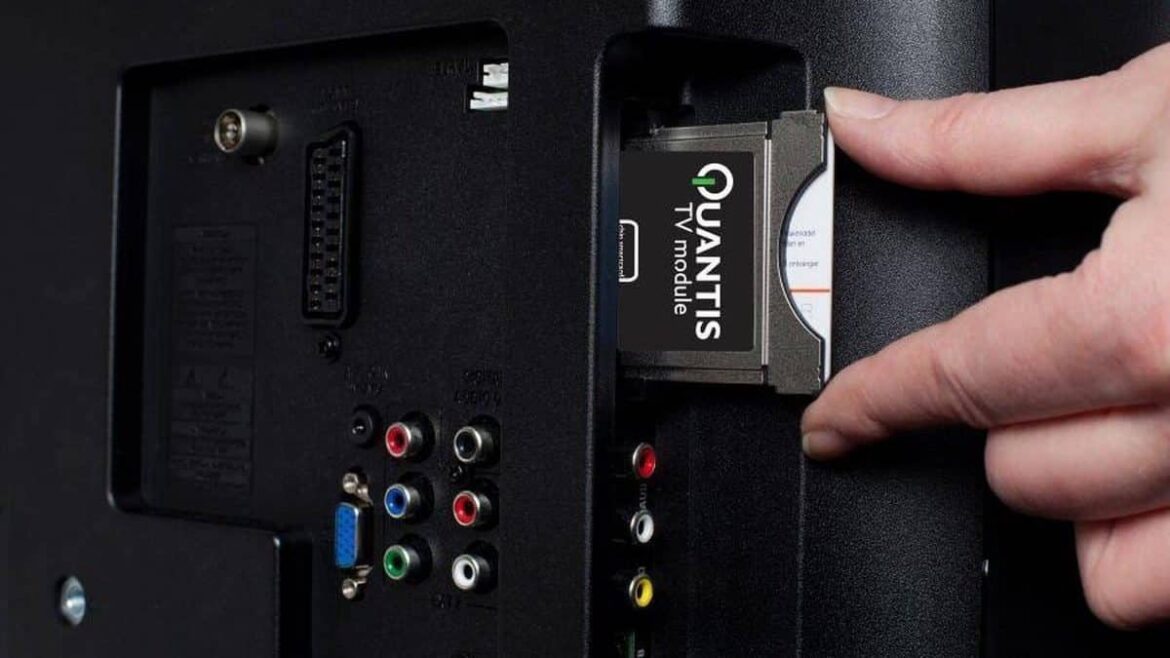1.6K
Those who are familiar with digital television are particularly interested in what the CI+ module is.
HD television: What is the CI+ module?
CI+ modules are accessories for televisions. The Common Interface Plus, as the abbreviation stands for, is more precisely a small device in the form of a card that you insert into the corresponding CI+ slot on your TV or receiver. It is used to decrypt encrypted TV signals that you receive via a digital cable connection or satellite reception.
- CI+ modules are plug-in cards the size of a credit card.
- To use CI+ modules, you need a TV that has a corresponding slot and supports CI+ modules.
- Devices from Sony, Loewe, Metz, Grundig, Bang & Olufsen, and Panasonic that were released after January 1, 2014, are CI+ compatible. CI+ is now standard on modern TVs and receivers.
- You must insert a smart card into the CI+ module in the correct orientation so that you can receive encrypted TV and radio stations. You can obtain the smart card from cable providers such as “Kabel Deutschland.” Then start a channel search to unlock the encrypted channels.
- While most channels are blocked in HD in a normal CI module, with a CI+ module you can also receive HD channels such as RTL HD, Sat1 HD, or ProSieben HD. Pay TV packages from providers such as Sky can also be decrypted with a CI+ module and used directly on your TV. In addition, the module enables you to receive cable TV in HD quality if certain channels are encrypted.
- CI+ is an extension of the earlier CI. The original CI (Common Interface) system was developed to enable flexible use of various pay TV services. With the introduction of CI+, new features were added, including better protection through enhanced encryption and copy protection mechanisms. Providers also have a control function: channels can impose restrictions via CI+, such as blocking recording functions.
Advantages and limitations of CI+
The CI+ module is an attractive solution, especially for viewers who value linear television in high picture quality.
- A CI+ module offers the advantage that you do not need an additional receiver, as you can receive pay TV directly via your TV. This saves space and means you don’t need a second remote control, making operation particularly straightforward.
- Furthermore, a single module with a smart card is all you need to unlock encrypted channels. Many providers such as Vodafone, Sky, and HD+ support the CI+ system, giving you flexibility in how you use it.
- However, there are also restrictions: Some channels block the recording of content or only allow time-shifted viewing.
- In addition, usage depends heavily on the provider, as not every service is compatible with every module. It is also not possible to distribute the signal throughout the entire household with a CI+ module, as is possible with IPTV or streaming solutions.
Alternatives and successor technologies to CI+
In addition to CI+, there are various other options for receiving pay TV and HD channels.
- A popular alternative is IPTV, as offered by MagentaTV or Vodafone Giga TV, for example. With this option, channels are transmitted to the TV via the Internet, which often comes with more flexible recording functions and the option of using them in multiple rooms.
- Streaming services such as Netflix, Disney+, or Amazon Prime Video are another option. These services completely bypass traditional encryption systems and instead rely on online access and a subscription model.
- You can also purchase receivers with integrated smart cards that already have access to pay TV services built in.
- In the long term, app-based solutions on modern smart TVs could also partially replace the CI+ module, as they allow even more direct and convenient access to content.

